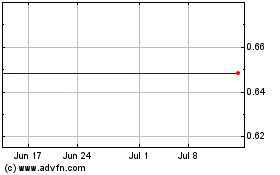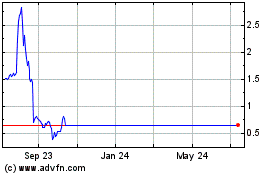Walgreens Sales Hit By Weak Flu Season -- WSJ
April 06 2016 - 2:31AM
Dow Jones News
By Lisa Beilfuss and Paul Ziobro
Higher prescription sales helped Walgreens Boots Alliance Inc.
offset a weak flu season in the latest quarter, as the drugstore
operator focuses on acquisitions and cost-cutting to combat
sluggish growth.
Walgreens Boots is in the midst of remaking itself to strengthen
its position in a U.S. health-care marketplace undergoing a vast
overhaul with consolidation in all corners and pressure to drive
down costs amid lower reimbursement rates.
The Deerfield, Ill., company has agreed to buy fellow drugstore
chain Rite-Aid Corp. for $9.4 billion, a deal that is undergoing
antitrust scrutiny and is expected to close later this year. It
also recently formed a close partnership with United Healthcare
Inc.'s pharmacy-benefit manager OptumRx that Walgreens hopes will
drive more patients to its stores.
The latest quarter provided a yardstick to measure the progress
of Chief Executive Stefano Pessina since the Italian billionaire
took control of the company in late 2014 amid a complicated deal
where Walgreens bought the rest of the European drug distributor
and retail chain Alliance Boots.
Overall sales at stores open at least a year rose 2.2%, the
slowest clip in about three years. Mr. Pessina, the company's
largest shareholder with a more-than-$12-billion stake, sought to
downplay the quarterly results.
"The work we are doing is far reaching and over time will have a
transformative impact," he said. "But quarter to quarter, it is not
always easy to find new things to say."
Shares of the company slipped 4.3% in midday trading to $82.65,
erasing gains from earlier in the year.
Though quarterly profit fell from last year, when the company
recorded a $814 million gain related to the transaction, Walgreens
Boots is continuing to cut costs that the new management team
identified over the past year.
The expansion of the Medicare Part D program is boosting sales
in the company's U.S. pharmacy business, with sales up 3.2% in the
second quarter, as the number of prescriptions filled rose
3.9%.
That gain was offset by a slight decline in the front-end of
Walgreens U.S. pharmacies, where sales fell 0.3% on a comparable
basis. The company, which operates more than 13,000 stores
worldwide, has been adding higher end beauty and other merchandise
to its renovated stores. Its U.S. drugstore business gets about
two-thirds of its revenue from prescriptions.
Both parts of the drugstores were hurt by a weak cold and flu
season, with the reported incidences of flu down 16% from a year
ago. That hurts sales of prescriptions, but also for
over-the-counter flu remedies, hand sanitizers and tissues.
For the quarter, Walgreens Boots' profit was $930 million, or 85
cents a share, down from $2.04 billion or $1.93 a share, last year.
Excluding the merger-related gain, among other items, per-share
profit rose to $1.31 from $1.18. Analysts anticipated $1.28 in
adjusted earnings per share.
Overall sales rose 14% to $30.18 billion, helped by last year's
acquisition.
The company raised the low-end of its per-share earnings
guidance for the year by a nickel, and now project earnings of
$4.35 to $4.55 a share.
Write to Lisa Beilfuss at lisa.beilfuss@wsj.com and Paul Ziobro
at Paul.Ziobro@wsj.com
Corrections & Amplifications: The low end of Walgreens'
previous full-year forecast was $4.30 in adjusted per-share
earnings. An earlier version of this article incorrectly stated the
previous forecast. Also, overall sales at Walgreens jumped to
$30.18 billion from $26.57 billion a year earlier. The story
misstated the previous year's figure.
(END) Dow Jones Newswires
April 06, 2016 02:16 ET (06:16 GMT)
Copyright (c) 2016 Dow Jones & Company, Inc.
Rite Aid (NYSE:RAD)
Historical Stock Chart
From Mar 2024 to Apr 2024

Rite Aid (NYSE:RAD)
Historical Stock Chart
From Apr 2023 to Apr 2024
